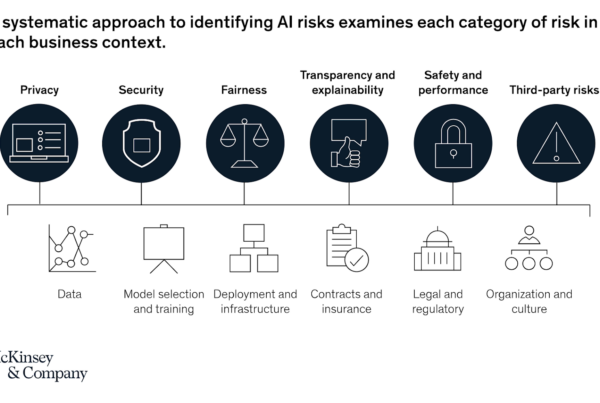A pandemic, climate threats, civil unrest, and economic disparities have disrupted organizations across every industry. Many companies are still weathering the first shock and recognize there may be more challenges ahead in the coming years.
Compounding these disruptions are emerging innovation trends that were already forecasted for the year, including embedded technologies, digitalization, greater privacy and data protection laws, entertainment fragmentation, and more. And consumer behavior continues to evolve with a demand for better mobile experiences and a shift toward direct-to-consumer and subscription services.
This combination of internal and external forces create an environment where change is necessitated. All enterprise IT departments will need to catch up to the 21st century and be prepared for future disruption through technology transformation.
It is time to ignite an IT revolution within each organization.
According to McKinsey, transformation should follow three vectors:
- Reimagining the role of technology in the organization
- Reinventing technology delivery
- Future-proofing the foundation
Realigning an organization for transformation requires changing the standard approach to IT services delivery and I would like to offer a framework for achieving organizational success.
 Technology Business Management (TBM)
Technology Business Management (TBM)
In Technology Business Management: The Four Value Conversations CIOs Must Have With Their Business, Todd Tucker details a framework for creating and using shared facts to make better decisions about people, technologies, services and investments.
The TBM framework offers a highly applicable philosophy to achieving digital transformation goals. The U.S. Department of Commerce defines TBM as a business model that allows IT to run as a business. While that definition may be a simple one, its benefits are far-reaching.
As part of a broader transformation of IT and/or the business, TBM offers a framework that creates a sense of budget ownership and motivates business decisions that optimize spending, in addition to enhancing business agility.
By enriching value, empowering decision-making, and driving economic forces to equilibrium, TBM offers the modern enterprise an opportunity to seize a greater competitive advantage and optimize value from IT investments.
How can this framework be effectively applied to these stated challenges?
Key Initiative: Optimize IT Spending Through Budget Ownership and Clear Value Proposition
Strong business decisions are built on an environment of shared purpose as well as clear budget ownership. With an organizational design that supports innovation and has a business-first focus, key resources can be properly allocated to the value chain. A technology-enabled value chain starts with innovating products or services for business uses and it continues through a cycle of delivery, selling, servicing, and running the corporation.
The TBM framework for optimizing IT spending, according to Tucker, is applied through the following steps:
- Transformation conversations should include the cost, quality, and value of IT, which can be achieved by mapping and tracking technology and identifying who is consuming it.
- IT’s value proposition must clearly articulate how IT enables the business to execute its strategy. The value proposition should essentially demonstrate how an organization owns and performs parts of its value chain.
- IT becomes an integral part of the business by delivering a value proposition that external vendors cannot match. This is accomplished through a business model designed to facilitate transformation higher in the value chain (e.g., Expense Center, Service Provider, Value Partner, or Business Driver).
By aligning business attributes and the value proposition, organizations can strike forth in a united effort. Furthermore, the TBM taxonomy and framework centralizes terminology and methodology so that disparate efforts aren’t happening concurrently. The tech department at the General Services Administration recommends identifying how your organization can “deliver the right IT services for the best possible price as you work with stakeholders to identify priority areas to focus your TBM efforts.”
In conclusion, it is imperative that technology leaders establish a clear value proposition for how IT can enable the business to execute its strategy and in turn taking its first meaningful steps forward in the digital transformation journey.










